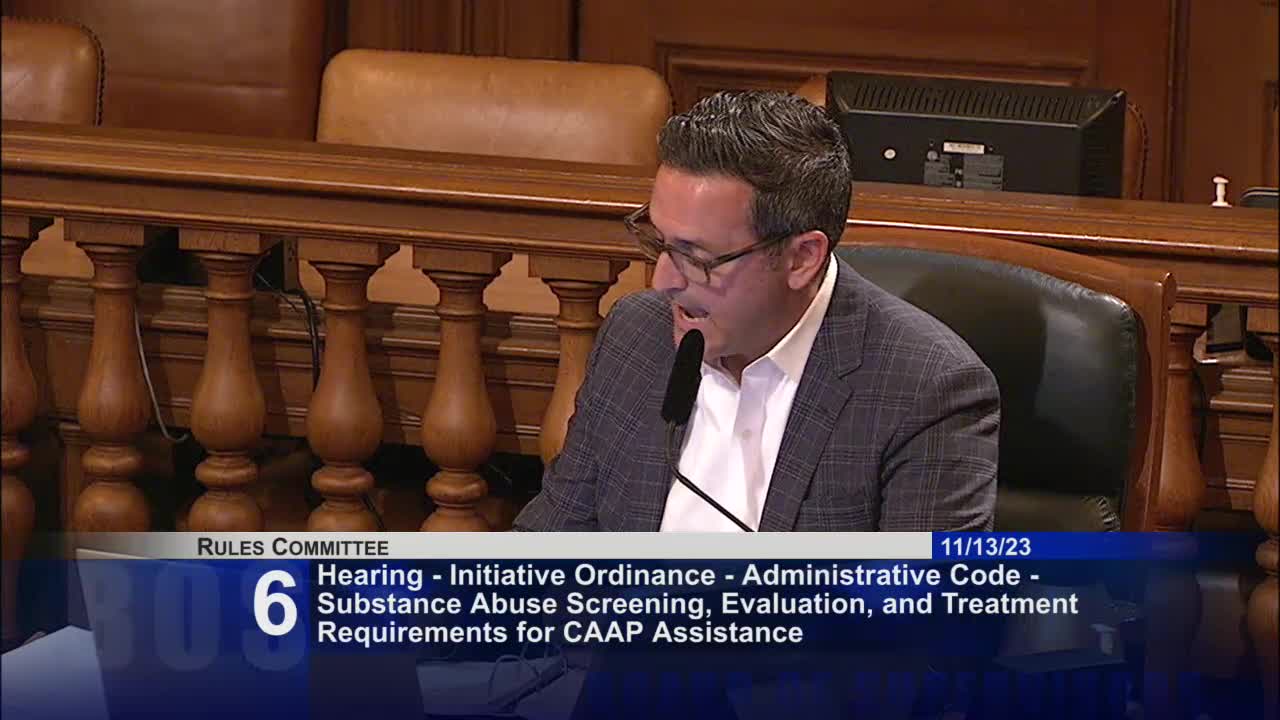San Francisco officials debate mental health investment amid rising drug crisis
November 13, 2023 | San Francisco County, California
This article was created by AI summarizing key points discussed. AI makes mistakes, so for full details and context, please refer to the video of the full meeting. Please report any errors so we can fix them. Report an error »

San Francisco County officials are grappling with a projected budget deficit that could soar to $800 million over the next few years, prompting urgent discussions on funding priorities and program implementations. During a recent government meeting, the focus was on the potential impacts of proposed policies aimed at addressing substance abuse and mental health services.
Key discussions highlighted the importance of maintaining cash aid for vulnerable residents, with concerns that cutting financial support could exacerbate crime and neglect the underlying issues contributing to substance abuse. Officials emphasized the need for a comprehensive approach that prioritizes mental health services alongside substance abuse treatment. Historical data suggests that previous funding cuts to mental health services have led to increased substance abuse, underscoring the necessity of investing in mental health facilities to support recovery.
The meeting also touched on the controversial proposal to implement drug testing for recipients of general assistance. Critics argued that such measures could perpetuate stigma and discourage individuals from seeking help. The historical context of the war on drugs was cited as a cautionary tale, illustrating the ineffectiveness of punitive measures in reducing drug use and their disproportionate impact on marginalized communities.
As the city considers these policies, officials acknowledged the need for further research and clarity on how to define and implement reasonable suspicion in drug testing. There is a consensus that expanding treatment options is crucial, particularly for those on general assistance who may also be struggling with addiction.
The discussions reflect a broader commitment to addressing the ongoing drug crisis in San Francisco, with officials recognizing the urgency of supporting residents through effective mental health initiatives. As the city prepares for potential ballot measures, the focus remains on creating sustainable solutions that prioritize the well-being of its most vulnerable populations.
Key discussions highlighted the importance of maintaining cash aid for vulnerable residents, with concerns that cutting financial support could exacerbate crime and neglect the underlying issues contributing to substance abuse. Officials emphasized the need for a comprehensive approach that prioritizes mental health services alongside substance abuse treatment. Historical data suggests that previous funding cuts to mental health services have led to increased substance abuse, underscoring the necessity of investing in mental health facilities to support recovery.
The meeting also touched on the controversial proposal to implement drug testing for recipients of general assistance. Critics argued that such measures could perpetuate stigma and discourage individuals from seeking help. The historical context of the war on drugs was cited as a cautionary tale, illustrating the ineffectiveness of punitive measures in reducing drug use and their disproportionate impact on marginalized communities.
As the city considers these policies, officials acknowledged the need for further research and clarity on how to define and implement reasonable suspicion in drug testing. There is a consensus that expanding treatment options is crucial, particularly for those on general assistance who may also be struggling with addiction.
The discussions reflect a broader commitment to addressing the ongoing drug crisis in San Francisco, with officials recognizing the urgency of supporting residents through effective mental health initiatives. As the city prepares for potential ballot measures, the focus remains on creating sustainable solutions that prioritize the well-being of its most vulnerable populations.
View the Full Meeting & All Its Details
This article offers just a summary. Unlock complete video, transcripts, and insights as a Founder Member.
✓
Watch full, unedited meeting videos
✓
Search every word spoken in unlimited transcripts
✓
AI summaries & real-time alerts (all government levels)
✓
Permanent access to expanding government content
30-day money-back guarantee

